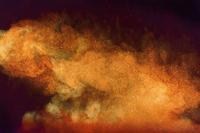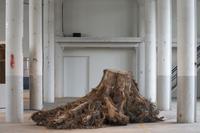Chapter 2WO offers you an insight in the world of Chilean artist and composer Nicolás Jaar. His fourten-week stay in Zaandam will be an intensive exploration of the Hembrug site. Together with his Shock Forest Group – named after the nearby ‘Schokbos’ – Jaar will conduct research into Het HEM, from which the site’s historical, sociological, archeological and geographical data will serve as the source material for a sound piece that is both about and from the location where it is played.
Our current time is dominated by rational knowledge of data and facts. Hard certainties and alternative facts are difficult to tell apart, and although we are increasingly measuring and looking, we seem to have forgotten how to know things. What role can music play in this? As a form of communication that goes beyond facts, words, gestures, music penetrates deeply into our being and touches emotional understanding within us.
"These livelihoods make worlds too – and they show us how to look around rather than ahead"
– Anna Lowenhaupt Tsing
According to anthropologist Anna Tsing, by exploring the ‘livelihoods’ around us, we can better understand how economic and ecological tensions affect our shared environment and how we can work toward a more pollution-resilient ecosystem.
For Chapter 2WO, Nicolás Jaar and his team of researchers consisting of cartographers, linguists, coders, sound makers, biologists, designers, and engineers will use Het HEM as a metonymy for the problems that the world is currently facing. By zooming in on hyper-local data from the Hembrug site where Het HEM is located, Jaar will develop an 'instrument of resonance' of music in which both data and intangibles merge into a new form of ‘listening’.


